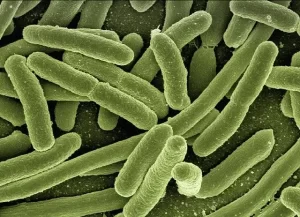These “precancerous lesions” will appear if cancer is coming
- Did Cloud Seeding Unleash a Deluge in Dubai?
- News draftScientists Identify Gut Bacteria and Metabolites that Lower Diabetes RiskNews draft
- OpenAI’s Model Matches Doctors in Assessing Eye Conditions
- UK: A Smoke-Free Generation by Banning Sales to Those Born After 2009
- Deadly Mutation: A New Monkeypox Variant Emerges in the DRC
- EPA Announces First-Ever Regulation for “Forever Chemicals” in Drinking Water
These “precancerous lesions” will appear if cancer is coming
- Red Yeast Rice Scare Grips Japan: Over 114 Hospitalized and 5 Deaths
- Long COVID Brain Fog: Blood-Brain Barrier Damage and Persistent Inflammation
- FDA has mandated a top-level black box warning for all marketed CAR-T therapies
- Can people with high blood pressure eat peanuts?
- What is the difference between dopamine and dobutamine?
- How long can the patient live after heart stent surgery?
These “precancerous lesions” will appear if cancer is coming. Before cancer comes, you will experience these “precancerous lesions”, but it is a pity that many people don’t pay attention to it!
Although, atrophic gastritis, polyps, liver cirrhosis…These conditions may be related to cancer, but there is a long distance for them to develop from a benign disease to a precancerous state and then evolve into cancer, so there is no need to panic, but Once found, enough attention should be paid to actively treat and adjust the lifestyle.
Those who have these habits are mostly people with a high risk of liver cancer.
It is reported that there are approximately 750,000 newly diagnosed liver cancer patients worldwide each year. Approximately 700,000 people are killed by liver cancer every year. Among them, the incidence and death of liver cancer in China account for more than half of the world!
What’s even more frightening is…often as soon as liver cancer is discovered: advanced stage!
Most liver cancers are diagnosed in advanced stages. Modern people live irregularly, such as goji berry wine, throat lozenges and cigarettes, the longest night, the longest jumping Di… People who live like this for a long time are all at high risk of liver cancer!
In addition, people with a history of liver disease, such as people with hepatitis B, hepatitis C, and cirrhosis, are also at high risk of liver cancer.
Except for the surface capsule, the liver has no painful nerves, so there are no obvious symptoms in the early stages of liver cancer. If there are clinical symptoms such as liver pain, jaundice, etc., it is generally found to be late.
Liver cancer prefers these 5 types of people
People who prefer liver cancer often have 5 characteristics, namely:
01 People who have had hepatitis B and cirrhosis
In China, about 90% of liver cancer patients have been infected with hepatitis B virus. In Western countries, liver cancer patients infected with hepatitis C virus are more common.
Therefore, it should be rigorously: People who have been infected with the hepatitis virus should pay more attention to it.
The next step in liver cirrhosis is often liver cancer, especially for patients who have been diagnosed with liver cirrhosis.
02 Alcohol like life
Many people know that people who drink for a long time are prone to “alcoholic liver.” On this basis, they have a chance to develop into liver cirrhosis and then into liver cancer.
Alcohol’s effects on human liver, kidneys, gastrointestinal and other organs mainly come from acetaldehyde. After alcohol enters the human body, most of it is metabolized in the liver, and only 2-10% is excreted by the kidneys and lungs.
After a person drinks alcohol, alcohol (ethanol) is converted into acetaldehyde by alcohol dehydrogenase in the first step.
Acetaldehyde is like formaldehyde in home improvement pollution. After drinking a lot of alcohol, a large amount of acetaldehyde will accumulate in the human body. It will have toxic effects on many tissues and organs, such as causing cell DNA damage and carcinogenesis.
03 Liver cancer patients in the family
I must first clarify that liver cancer is not the “genetic disease” that everyone imagines.
Inherited diseases refer to diseases caused by gene mutations or chromosomal aberrations. Simply put, they are inherited from parents to children, mostly congenital.
The heredity of liver cancer is called the “family aggregation phenomenon.” The most common example is that a mother with hepatitis B “passes” the hepatitis B virus to the child when they give birth.
But don’t worry too much, even if the mother is a hepatitis B virus carrier, as long as the child is given hepatitis B immune globulin and hepatitis B vaccine in time, it can be well controlled.
04 Smoking
Many people know that smoking can cause lung cancer, but they don’t know that smoking can also increase the risk of liver cancer. Two IARC (International Institute of Cancer Research) monographs published in earlier years pointed out: Smoking is an independent risk factor for the development of liver cancer!
Heavy smokers are almost twice as likely to develop liver cancer as non-smokers! For patients with liver cancer, smoking can also increase the incidence of complications, such as liver fibrosis, impaired liver function, and bile damage after surgery.
05 stay up late for a long time
The cases of liver cancer caused by staying up late for a long time mainly occur in young people. According to the doctor, among the patients he received, the youngest liver cancer patient was only about 24 years old.
Staying up late to cancer only requires four steps: mild fatigue, deep fatigue, internal mutations in important organs, and induce cancer.
This is because staying up late for a long time will cause the liver to be unable to excrete toxins normally and unable to repair itself. And staying up late for a long time will reduce the body’s immunity.
In addition, personality can also affect liver disease!
The introverted character here does not refer to those who are shy and not talkative in the traditional sense, but refers to people who are not good at venting their negative emotions.
Although such people may not smoke or drink, long-term depression can lead to liver stagnation, and liver cancer is also easy to find.
In addition, the high incidence of liver cancer is after 40 years old, which are men over 40 years old and women over 50 years old, and the incidence rate of males is higher than that of females.
Therefore, pay more attention after 40 years of age!
Remember the 3 good habits of “protecting the liver”
Poor lifestyle is also an important factor in causing liver cancer, so everyone should start from the bit by bit:
1 Quit the most liver-damaging habit-alcoholism
Especially people who feel uncomfortable without drinking for a day, the mouth feels comfortable, but the liver can’t stand it.
In a word: No smoking, less alcohol (preferably not), a balanced diet, and exercise are indispensable for any cancer prevention.
2 Don’t eat moldy and spoiled food
Improper storage of peanuts, corn, rice, etc. will be contaminated by molds and produce the carcinogen “aflatoxin”. This thing is very close to liver cancer, so be careful.
3 Regular physical examinations and reasonable cancer screenings
Liver cancer is too dangerous and early detection and treatment is the best way. So, find a time for a set of physical examinations!
Especially for the five types of high-risk groups mentioned at the beginning, it is even more important to have a physical examination, early detection and early treatment.
If liver cancer can be found at an early stage, the treatment effect will be good.
Specifically, this should be done:
For the first three types of people (patients with hepatitis B, liver cirrhosis, and liver cancer at home): It is recommended to have an abdominal ultrasound examination + serum alpha-fetoprotein (AFP) examination every 6 months;
If it is the latter two types of people (over 40 years old, love to drink): It is recommended to have a physical examination once a year. If abnormalities are found, then consider the above examinations.
Many people are wondering, how can cancer be justified? In fact, cancer does not appear all at once, it is a slow process. If the precancerous lesions can be stopped, then cancer will be difficult to occur.
Precancerous lesions are controllable or even reversible
Precancerous lesions are actually a pathological diagnosis. It is a two-way link. It may develop in a bad direction or return to a normal state. In other words, precancerous lesions are a controllable or even reversible state.
It usually takes several years or even decades to develop from the stage of precancerous lesions to cancer.
Therefore, when our body has precancerous lesions, if we know how to “brake” intervention in time, we can avoid the occurrence of cancer, and this is the last line of defense for cancer!
Remember! 8 common precancerous lesions
01 Chronic Atrophic Gastritis → Gastric Cancer
The development of gastric cancer has a general process:
Normal gastric mucosa→chronic superficial gastritis→chronic atrophic gastritis→intestinal metaplasia and dysplasia→gastric cancer
Chronic atrophic gastritis may be a precancerous lesion or a precancerous state, and the risk of canceration is relatively high; when the gastric mucosa has epithelial dysplasia and intestinal metaplasia (the gastric mucosa is replaced by intestinal mucosa), it may be the manifestation of precancerous lesions .
The gastric mucosa surface is obviously uneven, and the color is red and white, but mainly white
The clinical symptoms of chronic atrophic gastritis: mostly upper abdominal pain, bloating, abdominal discomfort, loss of appetite, etc.
Chronic atrophic gastritis can be diagnosed by gastroscopy and mucosal biopsy. As long as it receives regular treatment in the chronic phase, it usually does not become cancerous.
▼ Intervention method:
1. Examination: It is recommended to have a gastroscope every 3 years for superficial gastritis, and a gastroscope every 1-2 years for chronic atrophic gastritis, and actively treat it. Detect Helicobacter pylori and perform standard anti- Helicobacter pylori treatment as appropriate.
2. Quit smoking and alcohol: The severity of atrophic gastritis is positively related to smoking and drinking.
3. Eat regularly: Chew slowly, eat less pickled foods, avoid overeating, and avoid spicy moldy foods.
02 Adenomatous bowel polyps → bowel cancer
There are many types of intestinal polyps. Among them, adenomatous polyps are recognized as precancerous lesions, especially those with a diameter greater than 2 cm have a higher chance of becoming cancerous.
It is reported that more than 95% of colon cancers come from colon adenomas, which generally take 5 to 15 years from polyps to cancer. At this stage, polypectomy through colonoscopy can greatly reduce the incidence of bowel cancer.
▼ Intervention method:
1. Inspection: Colonoscopy is performed every 5 years for people over 50 years old, and digital anal examination is performed once a year. If polyps are found, they will be dealt with according to the situation.
2. Quit smoking and drinking: Drinking a lot of alcohol and smoking can cause genetic mutations and increase the incidence of intestinal polyps.
3. Eat less: foods with high animal protein and high fat, reduce consumption of refined grains, and reduce pickled and smoked foods.
4. Eat more: a catty of vegetables and half a catty of fruits a day, replace one third of the fine grains with grains and coarse grains, such as beans, sweet potatoes, millet, sorghum, and corn.
5. “33” exercise: Exercise more than 3 times a week, each exercise for more than 30 minutes, which will help promote the health of the immune system, reduce intestinal inflammation, and the risk of cancer will naturally be greatly reduced.
03 Lung nodules: atypical adenomatous hyperplasia → lung cancer
China is currently the largest country with lung cancer. Atypical adenomatous hyperplasia in lung nodules is a precancerous lesion. Among them, the larger the nodule, the greater the possibility of malignancy.
According to the clinical observation of thousands of cases of solitary lung nodules, the diameter of lung nodules is less than 0.5 cm, and the possibility of malignancy is very small, within about 1%; when 0.5 to 1 cm, the possibility of malignancy is 6% ~28%; lung nodules with a diameter of more than 2 cm have a malignant probability of 64% to 82%; lung nodules with a diameter of more than 3 cm, 90% to 95% are malignant.
▼ Intervention method:
1. Check: Do low-dose spiral CT once a year to screen for early lung cancer.
2. Quit smoking: The incidence of lung cancer in smokers is 10 times that of non-smokers, and smoking cessation can significantly reduce the incidence of lung cancer.
3. Pay attention to indoor ventilation: to prevent indoor micro-environment air pollution, attention should be paid to maintaining indoor ventilation and improving indoor air quality.
4. Reduce kitchen fumes: try to reduce frying and frying during cooking. Open the window and turn on the range hood before cooking, and turn on the range hood for another 5-10 minutes after cooking.
04Atypical Breast Hyperplasia→Breast Cancer
The development of breast cancer goes through:
Normal breast ductal hyperplasia → atypical hyperplasia → carcinoma in situ → invasive carcinoma
Atypical hyperplasia of the breast may be a precancerous lesion of breast cancer. Simple breast hyperplasia does not become cancerous. If ductal epithelial hyperplasia and atypical hyperplasia, it may be precancerous lesions. Generally, atypical hyperplasia of breast tissue, intraductal papilloma and cystic hyperplasia of breast are regarded as precancerous lesions of breast cancer.
▼ Intervention method:
1. Examination: Regular breast self-examination is very important for women. Ordinary women under 35 years old mainly use ultrasound examination for physical examination; women aged 45-55 in perimenopausal period are best to have a mammography examination once a year. If there are precancerous lesions, it is recommended to follow the doctor’s advice to review and see if surgery is needed.
2. Do not use estrogen health products indiscriminately: Using estrogen products indiscriminately can lead to the proliferation of breast ductal epithelial cells and even cancer.
3. Eat less high-fat foods: Eat less fried foods, butter, cheese and various sweets to control fat intake and avoid obesity.
4. Maintain a good mood: Negative emotions can easily lead to disorders of the body’s secretions, which have a certain relationship with breast diseases.
5. Appropriate exercise: It is an important factor in preventing breast cancer.
05 Liver Cirrhosis → Liver Cancer
According to the Global Malignant Disease Incidence Report (GLOBOCAN2012) released by the International Agency for Research on Cancer (GLOBOCAN2012), there were approximately 782,000 new cases of liver cancer in the world in 2012, and 50.5% of new cases of liver cancer in China.
There is a trilogy in the occurrence of liver cancer in China: hepatitis→cirrhosis→liver cancer.
If there is a history of hepatitis B with the basis of liver cirrhosis, it is a high-risk group of liver cancer. If there is a suspected space-occupying or elevated alpha-fetoprotein on imaging, it may be cancerous.
▼ Intervention method:
1. Examination: For patients with hepatitis B cirrhosis, it is best to have a physical examination every three months to six months, mainly for liver B-ultrasound and alpha-fetoprotein.
2. Active treatment: patients with liver cirrhosis should receive standardized treatment in time, and if there is hepatitis B, hepatitis B should be treated actively.
3. Quit smoking and limit alcohol to avoid overwork.
06 Cervical intraepithelial neoplasia → cervical cancer
After HPV persistent infection, cervical epithelial cells can change from atypical hyperplasia to cancer, which can last as long as 10 years or more.
Among them, cervical intraepithelial neoplasia, also known as cervical precancerous lesions, is divided into one, two, and three levels. The higher the level, the easier it is to become cancerous, and the lower the level, the better the treatment.
pay attention! A small amount of vaginal bleeding after sexual intercourse and gynecological examination is contact bleeding, which may be a symptom of cervical precancerous lesions and cervical cancer.
▼ Intervention method:
1. Inspection: Women who have sex should have a TCT and HPV test once a year. If there is an abnormality, a colposcopy or biopsy is required.
2. Actively treat inflammation: actively treat chronic cervicitis and cervical precancerous lesions. Pay attention to hygiene during sex.
3. Vaccination of HPV vaccine: Cervical cancer vaccine can be vaccinated when conditions permit to prevent cervical cancer from occurring.
4. Prevent over-fatigue: Bad living habits will reduce human immunity and create opportunities for virus invasion.
07 Junction mole → melanoma
Junction moles usually grow on the palms, foot soles, vulva and other areas that are easy to be rubbed. Compared with other moles, they are more likely to become cancerous.
Once the mole is found to be irregular in shape, blurry borders, different in color, fainting or gradually increasing in volume, and slight swelling or thickening of the skin, it is necessary to consult a doctor in time.
▼ Intervention method:
1. Chemical peeling or laser mole removal methods are more irritating, and it is not recommended to treat large junctional moles in this way.
2. Avoid excessive friction in life. For junctional moles with danger signs, surgical resection and pathological examination are best.
08 Leukoplakia → Cancer
Leukoplakia is a feature of precancerous lesions caused by abnormal epithelial hyperplasia, common leukoplakia on the oral cavity, esophagus, penis, vulva, and cervix.
▼ Intervention method:
If abnormal mucosal leukoplakia is found, it is best to go to the hospital for timely examination.
Although, atrophic gastritis, polyps, liver cirrhosis…These conditions may be related to cancer, but there is a long distance for them to develop from a benign disease to a precancerous state and then evolve into cancer, so there is no need to panic, but Once found, enough attention should be paid to actively treat and adjust the lifestyle.
(source:internet, reference only)
Disclaimer of medicaltrend.org
Important Note: The information provided is for informational purposes only and should not be considered as medical advice.



